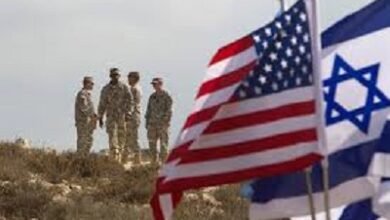Iran and Saudi Arabia have reached a plateau in restoring the full relations !!!
By : S K Singh : Editor in Chief

WAR-REPORT:-The deal, struck in March 2023, set a timeline for re-establishing diplomatic ties, reaffirmed principles of mutual non-interference and territorial integrity, recommitted the parties to two previous cooperation agreements, and promised to explore new areas where they might work together. But more than a year on, beyond opening embassies and facilitating hajj for Iranian pilgrims, the sides have done little to expand their ties.
Progress will require compartmentalisation. Forward movement will not be possible if Riyadh expects Tehran first to sever links to Middle Eastern allies while lacking security guarantees. Nor can it be achieved if Iran believes Saudi Arabia and its Gulf Arab allies will end their security partnership with the U.S. Tempering those hopes, however, could allow cooperation on non-sanctioned trade, commercial flights, student exchanges and public health – helping build confidence and contain regional tensions.
Relations between Shiite-majority Iran and Sunni-majority Saudi Arabia have long been complicated. Tehran and Riyadh are old rivals competing for both regional hegemony and leadership of Islam, fuelling sectarian tensions throughout the Middle East. They have been on opposite sides of several regional wars, including most recently in Yemen.
The latest break in diplomatic relations occurred in 2016, after Saudi Arabia executed a Shiite cleric, Sheikh Nimr al-Nimr, which prompted a mob to ransack the Saudi embassy in Tehran. Tensions rose after the U.S. launched a “maximum pressure” campaign of economic coercion against Iran in 2019, peaking in attacks on Saudi Arabia’s oil infrastructure later that same year, which Riyadh and Washington blamed on Tehran. But in 2021, the two countries began a fitful dialogue aimed at de-escalation. On 10 March 2023, with a strong push from China, they agreed to restore diplomatic relations and work toward strengthening their ties.
Over the succeeding months, the two states reopened their respective embassies, engaged in several high-level exchanges and expanded the conditions under which Iranian Muslims could make the pilgrimage to holy sites in Saudi Arabia.
But progress then sputtered as they failed to address outstanding areas of dispute. From Tehran’s perspective, the Saudis are dragging their feet on their promise to boost economic relations while still keeping Iran at arm’s length in regional security discussions. In Riyadh’s view, Iran has done little to curb support for non-state groups in the Middle East through which it projects regional influence, notably in Yemen, where Tehran’s backing for the Houthis is a longstanding concern.
To solidify their hesitant détente, the two countries will need to find a way to contain their disagreements – even ones seemingly addressed in the 2023 deal – while they work to advance in less controversial parts of their relationship.
Saudi Arabia should not hold progress hostage to its long-time insistence that Iran scale back ties with non-state allies without significant security guarantees in return. Iran, for its part, should recognise that Saudi Arabia and its allies will continue to rely on outside partners, especially the U.S., for their security.








